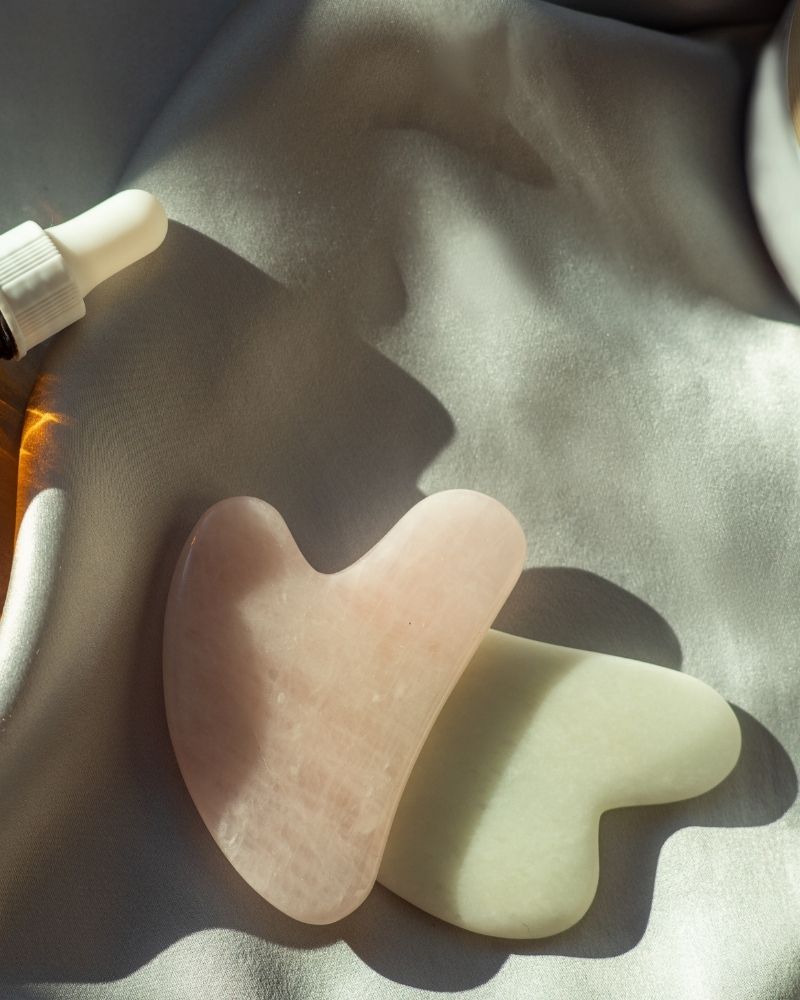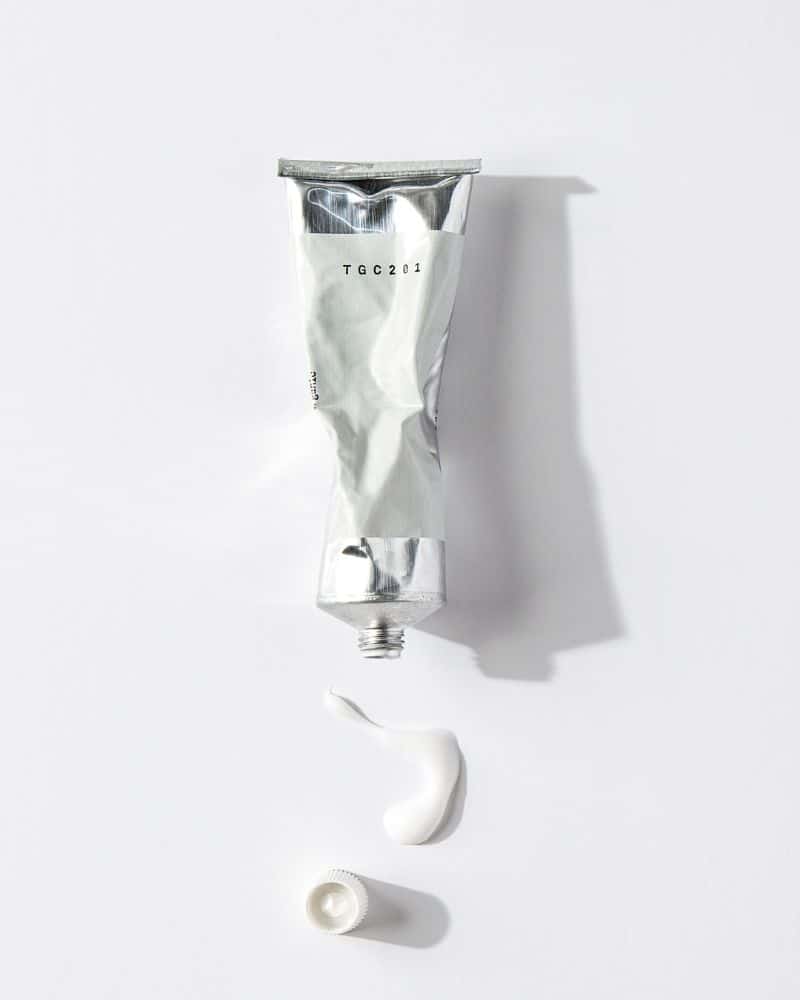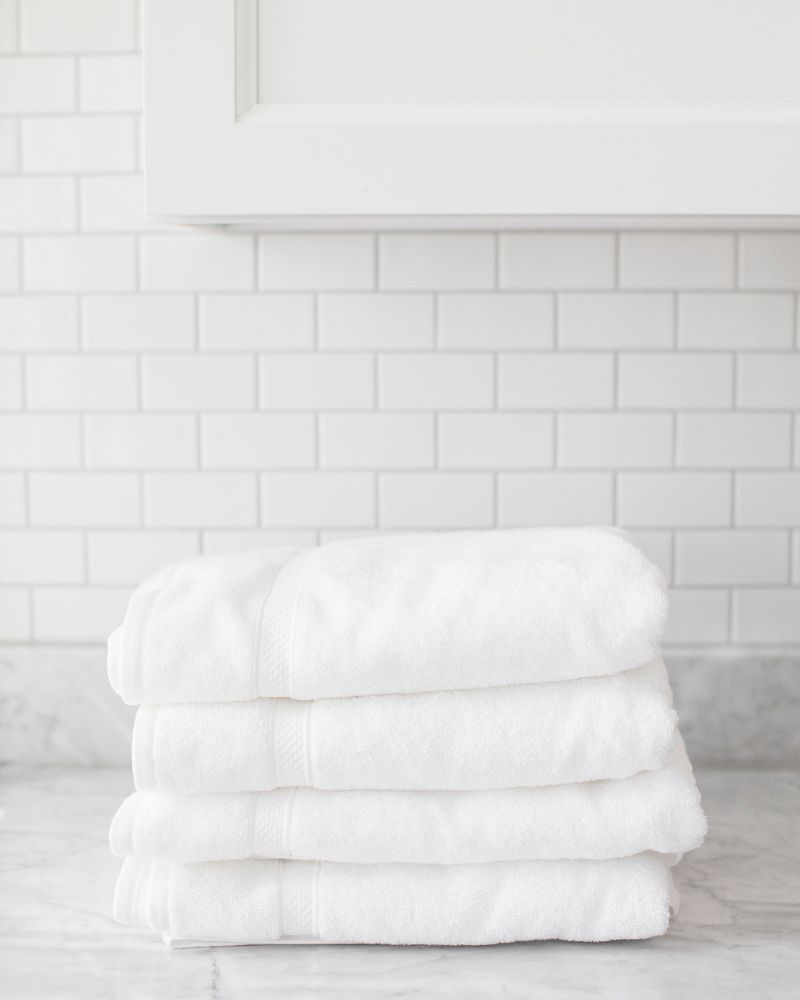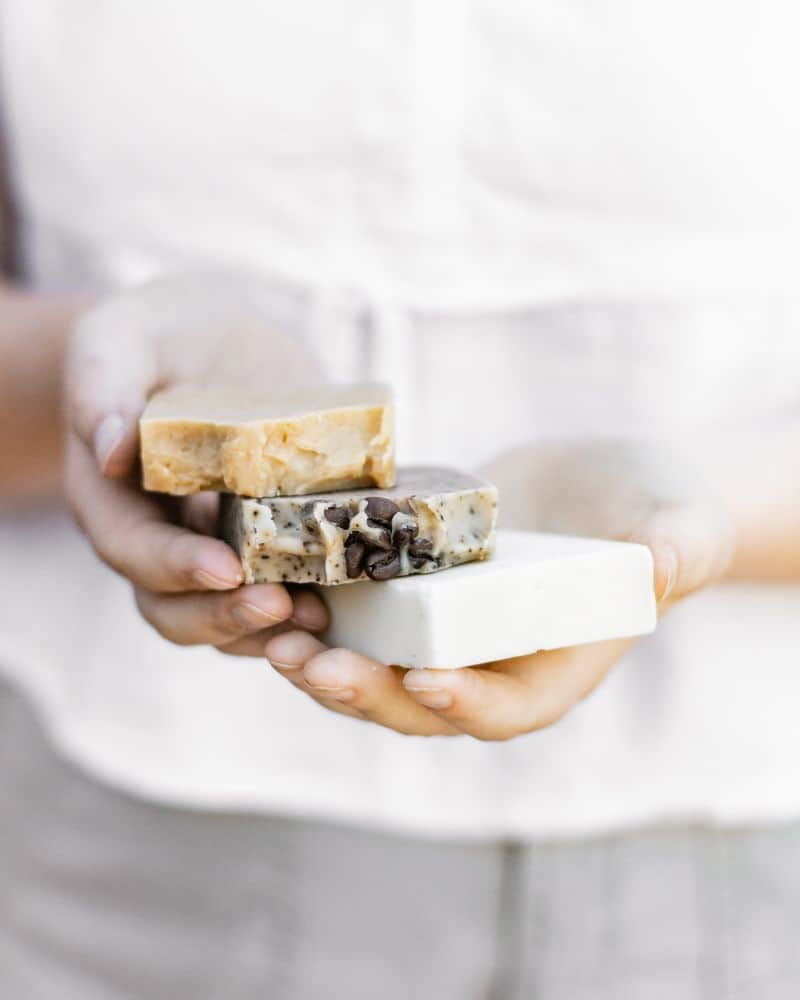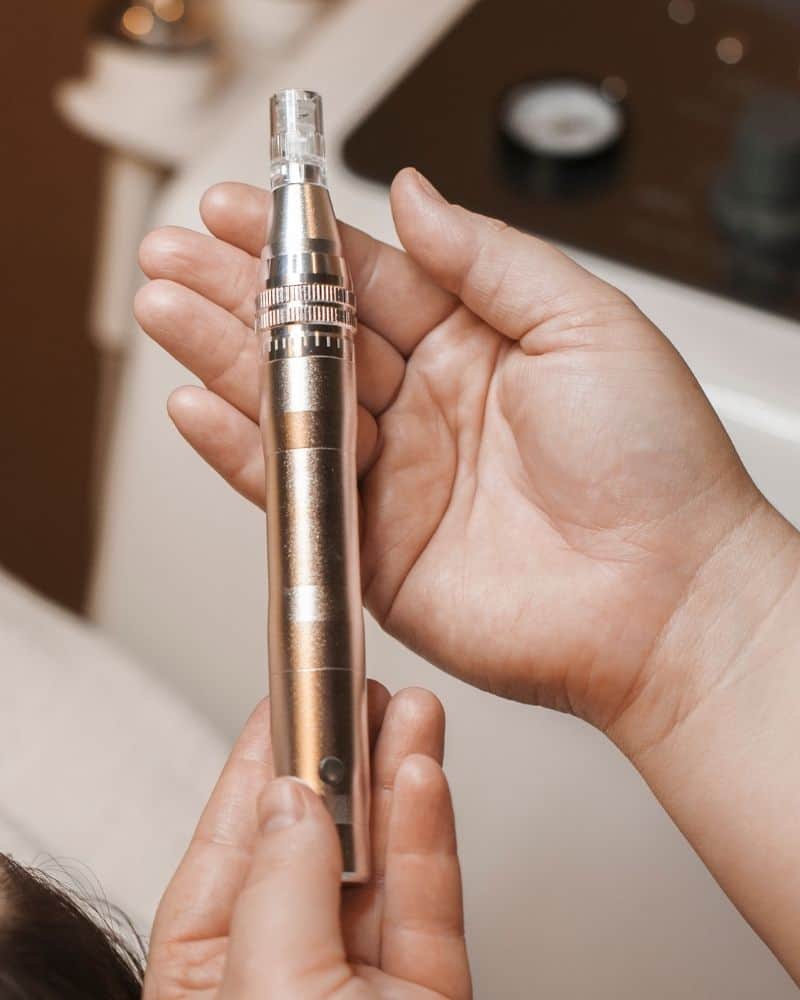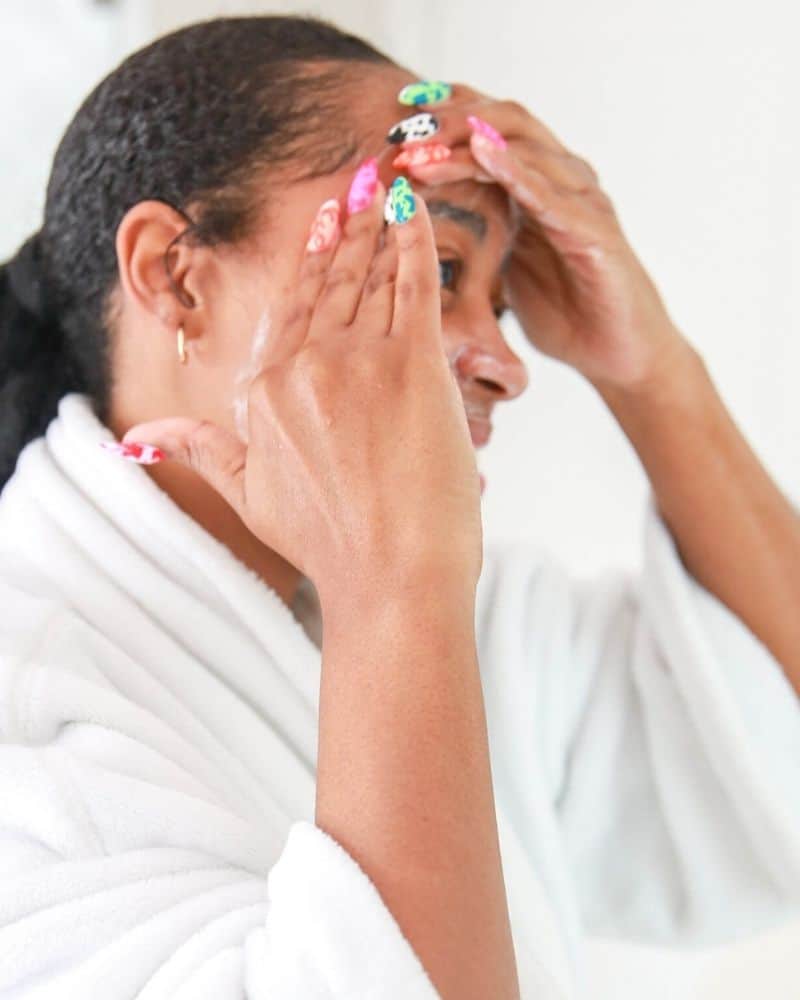Micellar Water Vs Cream Cleanser: Which Is Best For You?
This post may contain affiliate links.

For those who are looking for a gentle cleanser to remove dirt, makeup, and oil from their skin, micellar water and cream cleanser are two popular options. Both of these products have their own unique benefits and drawbacks. So how do you decide which one is right for you? Let’s take a closer look at micellar water vs cream cleanser to help you pick out the right product for your skin.
What Is Micellar Water

Micellar water is a type of cleanser that contains tiny molecules called micelles which are tiny balls of surfactants suspended in water. These micelles attract dirt, oil, and even makeup. Micellar water is ideal for all skin types—especially sensitive skin—because the surfactants are gentle and non-irritating.
Micellar water first became popular thanks to the French, who started using it as a way to quickly and effectively cleanse their skin without harsh ingredients. And since then, it has become a staple in many people’s skin care routines.
How Does Micellar Cleansing Water Work?
Micellar water is made up of two main ingredients: water and surfactants. When surfactants are added to water, the surfactant molecules arrange themselves into spheres, called micelles.
Surfactants are molecules consisting of both hydrophilic (water-attracting) and lipophilic (oil-attracting) components. Each surfactant molecule is arranged with the hydrophobic ends (water hating) in the center of the sphere and the hydrophilic (water loving) heads facing outward.
When surfactants and water are added together, the surfactant molecules arrange themselves into little spheres called micelles. Each surfactant molecule is arranged with the hydrophobic ends (water hating) in the center of the sphere and the hydrophilic (water loving) heads facing outward.
The hydrophillic heads (water loving) are drawn to H2O, while the hydrophobic tails attract grease and oil.
So, when you apply micellar water, the hydrophobic tail picks up dirt, oil and makeup, which is then lifted away with the cotton pad.
While most micellar waters do not contain oil, be sure to read the label before purchasing one, as some do contain extra oils like sunflower seed oil to help remove waterproof makeup and nourish the skin.
Bottom line: micellar water is made up of tiny balls of cleansing agents called micelles. These micelles help to cleanse the skin of dirt, oil and makeup without using harsh cleansing agents or stripping the skin.
Who Should Use Micellar Water
Micellar water is suitable for all skin types, but those with sensitive or reactive skin may benefit the most. Its non-irritating formula won’t strip the skin of its natural oils and helps to keep it hydrated.
Although micellar water can be used as a makeup remover and cleanser, if you wear waterproof or long-wearing makeup or sunscreen, micellar water isn’t strong enough to remove them all. For these types of makeup, it’s best to use an oil-based cleanser like a cleansing oil or balm.
Micellar water is best used by those who wear little to no makeup (think lighter makeup like tinted moisturizers and non-waterproof eye makeup).
How To Use Micellar Water
Micellar water is a great option for those who want a quick and easy way to cleanse their skin. Here is a step-by-step guide on how to use micellar water:
- Start by shaking the micellar water bottle well to ensure that the micelles are evenly distributed throughout.
- Take a cotton pad and saturate the pad lightly with the micellar water. You can use one or two cotton pads, depending on how much makeup you’re wearing or how much cleansing you need.
- Gently wipe the cotton pad across your face to remove makeup and gently cleanse the skin. For eye makeup, I like to lightly press the pad onto my eyelid for a few seconds before wiping. It helps to remove everything easier without having to tug at the delicate eye area.
- Repeat the process if necessary depending on how much makeup you are wearing.
- Follow up with a gentle cleanser to remove any leftover impurities and residue from the micellar water.
- Follow up with your regular skincare routine.
What Is A Cream Cleanser

A cream cleanser is, well, exactly what it sounds like – a cream based cleanser that is gentle enough to be used on even the most sensitive skin.
Cream cleansers, also known as cleansing creams or milk cleansers, are formulated with mild surfactants that help to lift away dirt, oil and makeup without stripping the skin of its natural oils or causing further irritation or dryness. They usually have a silky, lotion or cream type feel as you massage them into the skin, but unlike actual moisturizers, cleansing creams don’t absorb into the skin.
They contain extra moisturizing and nourishing ingredients like oils and butters. They are usually used as a first step in a double-cleansing routine and helps to remove makeup, dirt, oil, and other impurities from the skin.
Cream cleansers are great for those with dry or sensitive skin as they help to add extra hydration. They are also good for those who wear heavier makeup and need a more thorough cleansing.
Most cleansing creams are designed to be waterless, and the instructions will say you can tissue off the remaining residue without rinsing. However, it’s always best to rinse the cleanser off the skin so you don’t leave any residue behind which can cause further irritation.
How Do Cream Cleansers Work?
We’ve already established that cleansing creams are usually made up of petrolatum, mineral oils, waxes and water. But how do these ingredients work together to rid your skin of dirt and excess oil?
Cleansing creams are usually made up of oils, petroleum and waxes. Mineral oil and plant oils such as sunflower seed oil and olive oil are commonly found in cleansing creams. Waxes such as beeswax are also used to give the cleanser a smooth texture while nourishing the skin.
All of these ingredients are called emollients, which are known for the ability to moisturize, soothe and soften skin. So why are they used in cream cleansers?
Emollients are hydrophobic molecules, which means they hate water and love oil. So when they come in contact with water, they repel it. If you’ve ever tried to mix oil and water together, you know they don’t mix very well because the hydrophobic properties are repelling the water.
While emollients hate water, they love oils! They’re attracted to other oils and grease. So, when you apply a cleansing cream to your skin, these emollients are attracted to the oils on your skin ‘s surface and help to literally lift away dirt, oil and other impurities. The emollients also act as a barrier to keep your skin hydrated while you are cleansing.
When the cream cleanser is applied to your skin, it helps to break down and dissolve oil-based impurities like makeup, dirt and sebum. As you massage the cleanser into your skin, these impurities are lifted away from the skin’s surface and can easily be wiped away with a tissue or cloth.
Not only do these emollients help to cleanse the skin, but they can also help to soothe irritated skin, reduce redness and even prevent transepidermal water loss, which can help to treat and prevent dry skin.
Who Should Use Cream Cleansers
Cream cleansers are generally a good choice for people with dry or sensitive skin, as they are formulated to be gentle and nourishing. However, they can also be used by people with normal or combination skin types who prefer a gentler cleansing option.
Here are some specific groups of people who may benefit from using cream cleansers:
- Those with dry skin: Cream cleansers are ideal for people with dry skin as they help to moisturize the skin while removing impurities. The emollients and moisturizing ingredients in cream cleansers can help to prevent dryness and flakiness, leaving the skin feeling soft and smooth.
- Those with sensitive skin: Cream cleansers are typically formulated to be gentle and non-irritating, making them a good choice for people with sensitive skin. They can help to cleanse the skin without causing redness, itching, or other irritation.
- Those with mature skin: As we age, our skin becomes drier and more prone to wrinkles. Cream cleansers can help to hydrate and nourish mature skin, leaving it looking and feeling younger and more radiant.
- Those with skin conditions: If you have a skin condition like eczema or rosacea, you may find that cream cleansers are gentler and less irritating than other types of cleansers. However, it’s always a good idea to consult with a dermatologist before trying any new skincare product, especially if you have a skin condition.
Overall, cream cleansers are a good choice for anyone who wants a gentle, hydrating way to cleanse their skin.
How To Use Cream Cleansers
Here are the general steps to using a cream cleanser:
- Apply a small amount of cream cleanser to your fingertips or a soft washcloth.
- Gently massage the cleanser onto dry skin using circular motions, taking care to avoid the eye area.
- Continue to massage the cleanser into your skin for 30 seconds to 1 minute, focusing on areas where you have excess oil or makeup.
- You can either tissue off the excess product or rinse it off using lukewarm water. You can also use a damp washcloth if you find it’s hard to fully remove.
- Pat your face dry with a clean towel. Avoid rubbing your face as this can cause irritation.
- Follow up with your regular skincare routine.
I always recommend following up with a regular, gentle cleanser to ensure you’re not leaving any residue or impurities behind, which can cause further irritation.
Micellar Water Vs Cream Cleansers
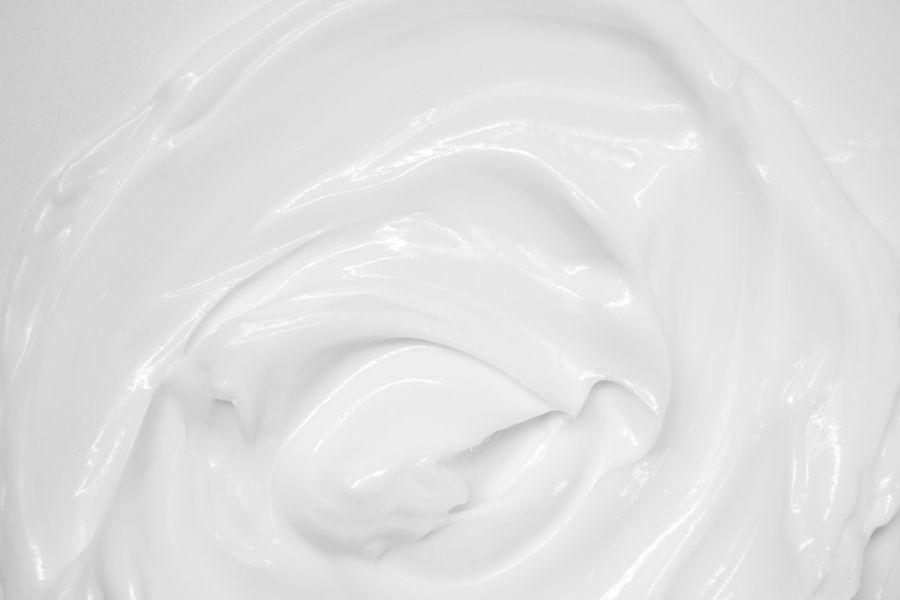
Both micellar water and cream cleansers are designed to cleanse the skin to remove makeup, dirt and oils, but they have some key differences. Micellar water is a quick and easy option that is best for those with oilier skin and wear lightweight makeup, while cream cleansers are best for those with sensitive, dry or mature skin or those that wear heavier makeup.
While they both serve the same purpose of removing dirt, makeup, and impurities from the skin, they differ in terms of texture, formulation, and key ingredients. In this guide, we’ll discuss the similarities and differences between micellar water and cream cleansers, as well as their common ingredients, best uses, and skin type suitability.
Micellar Water vs. Cream Cleansers: Similarities
A. Purpose: Both micellar water and cream cleansers are used to cleanse the skin and remove dirt, oil, and makeup.
B. How they work: Both products work by breaking down and lifting away impurities from the skin’s surface. Both can be used with or without water, as a stand alone cleanser or as a first cleanser in a double cleansing routine.
C. Recommended usage: Both products are gentle enough to be used daily and are suitable for most skin types.
II. Micellar Water vs. Cream Cleansers: Differences
A. Texture and Formulation: Micellar water is a water-based cleanser that contains micelles, which are tiny balls of cleansing agents suspended in water. Cream cleansers, on the other hand, are thick and creamy and often contain moisturizing ingredients like oils and waxes.
B. Key Ingredients: Micellar water typically contains mild surfactants and moisturizing agents, while cream cleansers may contain a wider range of moisturizing and nourishing ingredients like oils, glycerin, and shea butter.
C. Skin Type Suitability: While both products can be used by most skin types, micellar water is particularly well-suited for oily and acne-prone skin, while cream cleansers are best for dry, sensitive, or mature skin types.
III. Common Ingredients used in Micellar Water and Cream Cleansers
A. Micelles: Micelles, found in micellar water, are tiny oil molecules that attract and lift away impurities from the skin.
B. Emollients: Emollients are moisturizing agents that help to soften and soothe the skin, preventing dryness and irritation and often found in cream cleansers.
C. Surfactants: Surfactants are mild cleansing agents that help to remove dirt and oil from the skin’s surface, which are found in both micellar water and cleansing creams.
D. Hydrating Ingredients: Both micellar water and cream cleansers may contain moisturizing agents like glycerin or hyaluronic acid to hydrate and soften the skin.
E. Other ingredients: Depending on the product, micellar water and cream cleansers may also contain vitamins, antioxidants, or other beneficial ingredients like chamomile, aloe vera, or green tea extract.
IV. Who should use Micellar Water and Cream Cleansers
A. Best for Micellar Water: Micellar water is best suited for those with oily or acne-prone skin, as it’s lightweight and doesn’t have heavy ingredients like oils and waxes that are often found in cream cleansers. Micellar water is also best for those who wear light makeup or no makeup at all, as it’s not strong enough to be able to remove waterproof makeup or sunscreen completely.
B. Best for Cream Cleansers: Cream cleansers are ideal for those with dry, sensitive, or mature skin, as they help to hydrate and nourish the skin while cleansing. While they are very gentle, they’re also more powerful and can remove heavier makeup and sunscreen, so they’re best for those that wear long-wearing or waterproof makeup/sunscreen.
In summary, both micellar water and cream cleansers can be effective for cleansing the skin, but they differ in terms of texture, formulation, and key ingredients. If you have oily or acne-prone skin, you may prefer micellar water, while those with dry, sensitive, or mature skin may benefit from using a cream cleanser. When choosing a cleanser, be sure to consider your skin type and concerns, as well as the ingredients and formulation of the product. With the right cleanser, you can achieve clean, refreshed, and healthy-looking skin.
Micellar Water Vs Cleansing Creams: Pros & Cons
Micellar water and cream cleansers are both popular choices for cleansing the skin. While both products have their benefits, they also have some potential drawbacks. In this guide, we’ll explore the pros and cons of micellar water and cream cleansers to help you decide which one is right for your skin.
I. Pros and Cons of Micellar Water
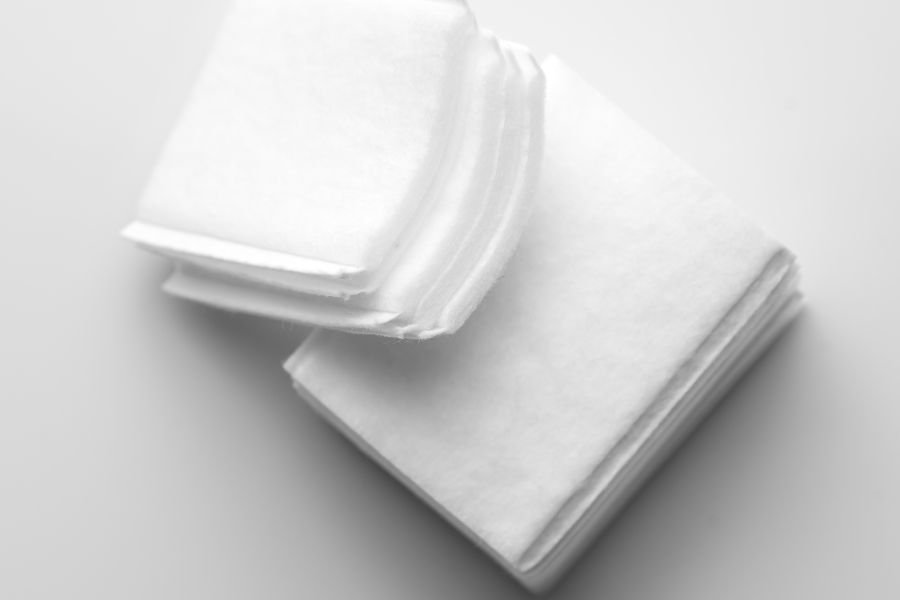
Pros:
- Gentle: Micellar water is a gentle cleanser that is less likely to irritate or dry out the skin.
- Quick and Easy: Micellar water is a convenient option for those who want a quick and easy cleansing routine.
- Removes Makeup: Micellar water is effective at removing lightweight makeup
- Suitable for Oily & Acne Prone Skin: Micellar water is an excellent choice for gently cleansing oily and acne-prone skin without stripping the skin and causing irritation.
Cons:
- Leaves Residue: If you don’t follow up with a cleanser, your micellar water will leave behind surfactants on your skin, which can lead to irritation and dryness. It can also leave behind impurities like makeup, dirt and oils.
- Not as Thorough: While micellar water can remove surface dirt and makeup, it’s not as thorough as other cleansers and therefore won’t remove heavier makeup, sunscreen or waterproof products
- May Require More Product: Depending on the brand and formulation, you may need to use multiple cotton pads to fully cleanse the skin properly.
II. Pros and Cons of Cream Cleansers
Pros:
- Moisturizing: Cream cleansers are packed with emollients which not only help to cleanse the skin, but also moisturize, nourish and soften rough & dry skin.
- Soothing: Cream cleansers are very gentle and contain some of the most gentle cleansing agents to avoid irritation and dryness, so they’re great for those with dry or sensitive skin.
- More Thorough: Cleansing creams are more effective at cleansing than micellar water and can effectively remove heavier makeup, sunscreen or waterproof products.
Cons:
- May Be Too Heavy: Cream cleansers can be too heavy for those with oily or acne-prone skin, potentially leading to clogged pores and breakouts.
- May Leave a Film: Some cream cleansers may leave a film on the skin, which can feel uncomfortable or leave a greasy appearance.
Should I Use Micellar Water Or Cream Cleanser?

Ultimately, the decision of whether to use micellar water or cream cleanser depends on your skin type and personal preference. If you have sensitive skin, are short on time, or wear a lot of makeup, micellar water may be the better option for you. If you have dry or mature skin, want a deep cleanse, or prefer a more traditional cleansing routine, then cream cleansers may be the way to go.
Micellar Water Vs Cleansing Cream FAQ’s
Is micellar water better than cream cleanser?
It depends on your skin type and personal preference. If you wear little to no makeup or have oily/acne-prone skin, micellar water is a great choice to gently cleanse the skin without being stripping. Cream cleansers are much more nourishing and better at removing heavier makeup.
So if you have dry/sensitive skin or wear a lot of makeup or sunscreen, cream cleansers are certainly the better choice.
Is it OK to use micellar water instead of cleanser?
Micellar water can be used as a cleanser, but it may not be enough to fully cleanse your skin if you wear heavy makeup or have a lot of dirt and oil buildup. Micellar water can also leave behind residue which can cause irritation and dryness if left on the skin. I always recommend following up with a regular cleanser to ensure you’re removing all traces of makeup and other impurities.
What is the difference between a cream cleanser and a facial cleanser?
Cream cleansers are just a type of facial cleansers. Cream cleansers are typically more moisturizing than other facial cleansers, making them a great option for dry or sensitive skin types. Other types of facial cleansers include foaming cleansers, gel cleansers, oil cleansers and hydrating cleansers.
Can I use micellar water after cleansing cream?
Yes, you can certainly use micellar water after using a cleansing cream, but do keep in mind that if you don’t follow up with a regular cleanser, you will leave residue behind from both the micellar water and cream cleanser.
What is the difference between micellar water and cleansing gel?
Micellar water is a gentle, water-based cleanser that is applied to a cotton pad and swept over the skin to remove dirt, oil and makeup. They’re very gentle and great for all skin types. Cleansing gels have a much thicker consistency than foaming cleansers and use milder surfactants to cleanse the skin. They are usually formulated more for oily and acne-prone skin types to cleanse away stubborn oil and bacteria without stripping the skin. They tend to be more gentle than foaming cleansers.
Micellar Water Vs Cleansing Cream Wrap Up
Both micellar water and cream cleansers have their pros and cons, and the best choice for you will depend on your individual skin type and concerns. Micellar cleansing water and cleansing creams are excellent for those looking for a gentle cleanser that removes makeup, dirt and oil without much effort. Which one is best for you comes down to your skin type and what you are looking for in a cleanser. Micellar water is best for those with oily and acne-prone skin who wear little to no makeup, while cream cleansers are great for those with dry and sensitive skin or wear heavier makeup or sunscreen due to ingredients like oils and butters. Consider your preferences and needs, as well as the ingredients and formulation of the product, when deciding which cleanser to choose.
